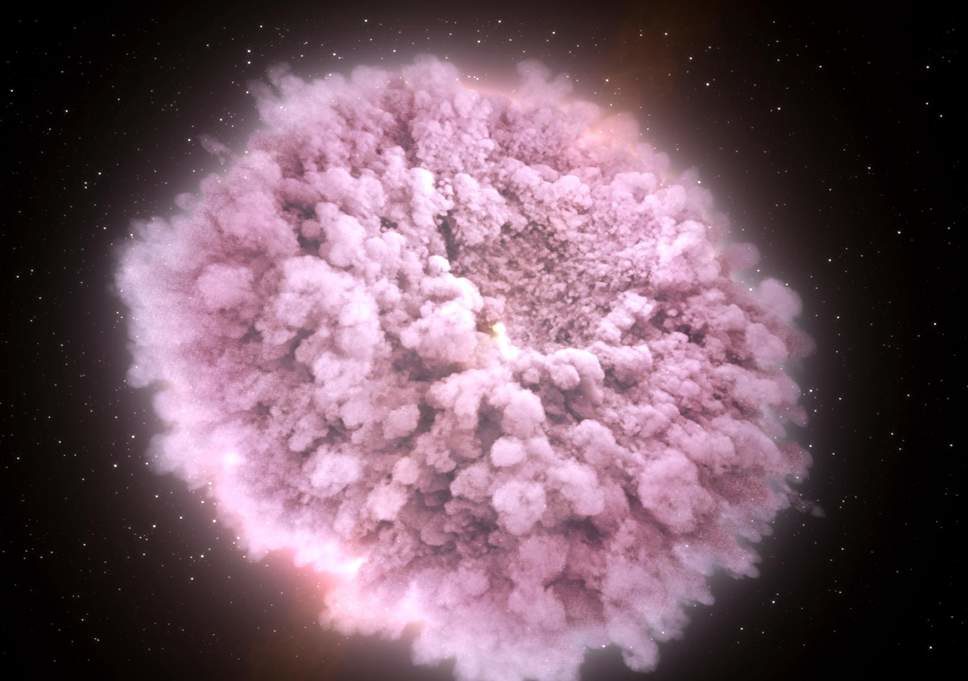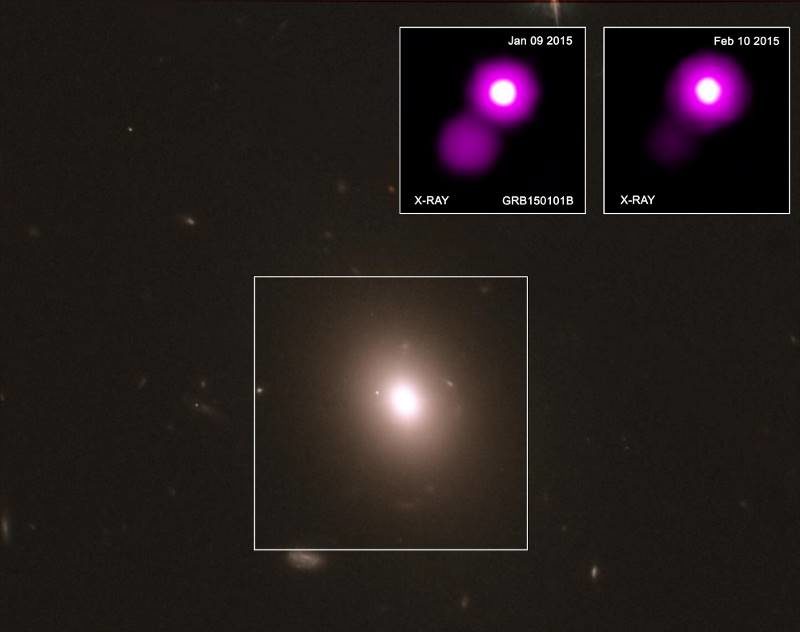
Vast explosions, throwing out gold, platinum and many of the world's most precious elements, could be happening throughout the universe.
Nasa scientists have spotted what they think are immense explosions caused by neutron stars colliding into each other in distant space.
When that catastrophic event happened, it sent an intense jet of of high-energy particles through space that made their way past the scientists who spotted them using Nasa's array of space telescopes.
Looking at the data from those telescopes could shed more light on some of the most spectacular and intense collisions found in space. And it could suggest that significant events of the kind described by scientists are relatively common.
The researchers think the explosion could be a "kilonova". That is a bright flash of radioactive that flings out huge quantities of important elements like silver, gold, platinum and uranium.
The announcement comes after scientists announced last October that they had seen the first explosion of this kind. They spotted super dense stars smashing into each other 130 million light years away - wobbling the spacetime of the universe, and allowing them to be picked up by gravitational wave detectors at LIGO.
At the time, that discovery was hailed as a "new chapter in astrophysics" and an unexpected discovery. It allowed scientists to understand the spectacular explosions of neutron stars, as well as answering questions about where gold comes from.
Now, scientists have found what they think might be a related event, known as GRB150101B - and one that suggests such spectacular explosions could be far more common than we had realised. The similarities between the two events have led researchers to suggest they might in fact be related.

The two look very similar: both threw out a short gamma-ray burst and a flash of bright, blue optical light. They also seem to come from very similar galaxies. Together, that has led scientists to believe that they are related - and that therefore many more similar events might be happening throughout the universe.
"We have a case of cosmic lookalikes," said study co-author Geoffrey Ryan, a postdoctoral researcher in the UMD Department of Astronomy and a fellow of the Joint Space-Science Institute. "They look the same, act the same and come from similar neighbourhoods, so the simplest explanation is that they are from the same family of objects."
Scientists are able to learn less about the new collision because, unlike in October, they did not pick up the gravitational wave that was thrown out by the explosion because the new one was so much further away. With that data, it is possible to work out the masses of the two objects that merged - but they hope to gather that kind of data in the future.
"Surely it's only a matter of time before another event like GW170817 will provide both gravitational wave data and electromagnetic imagery. If the next such observation reveals a merger between a neutron star and a black hole, that would be truly groundbreaking," said study co-author Alexander Kutyrev, an associate research scientist in the UMD Department of Astronomy with a joint appointment at NASA's Goddard Space Flight Center. "Our latest observations give us renewed hope that we'll see such an event before too long
Andrew Griffin is technology editor and science reporter at The Independent, and established and runs the InFact section. He primarily writes about the latest developments in science and technology - everything from rocket launches to phone launches, new games to gravitational waves - and the ways they impact on the rest of the world. Follow him @_andrew_griffin



Reader Comments
Something being forged! ...
Is this sort of fantasy (100's of planets' mass of pure gold) mandatory in order then to be given buckets of our money